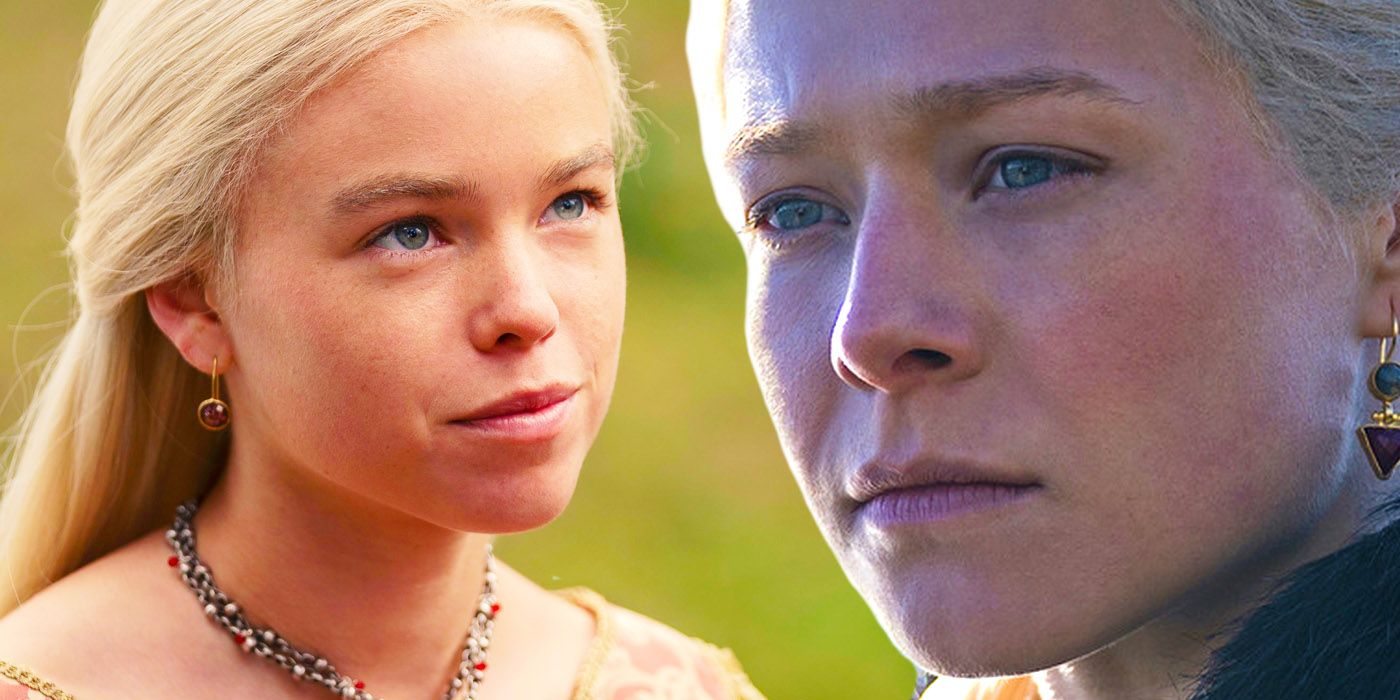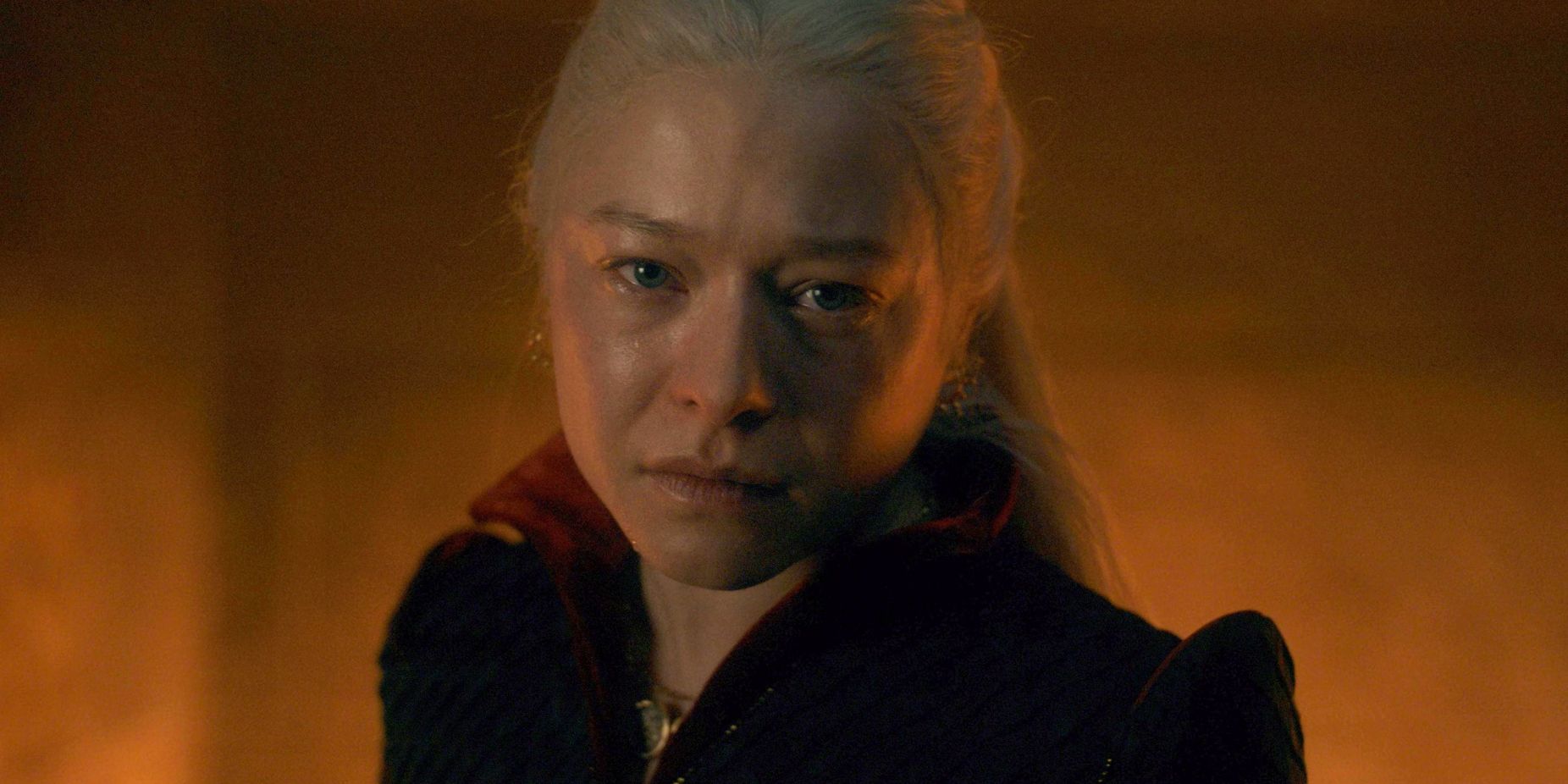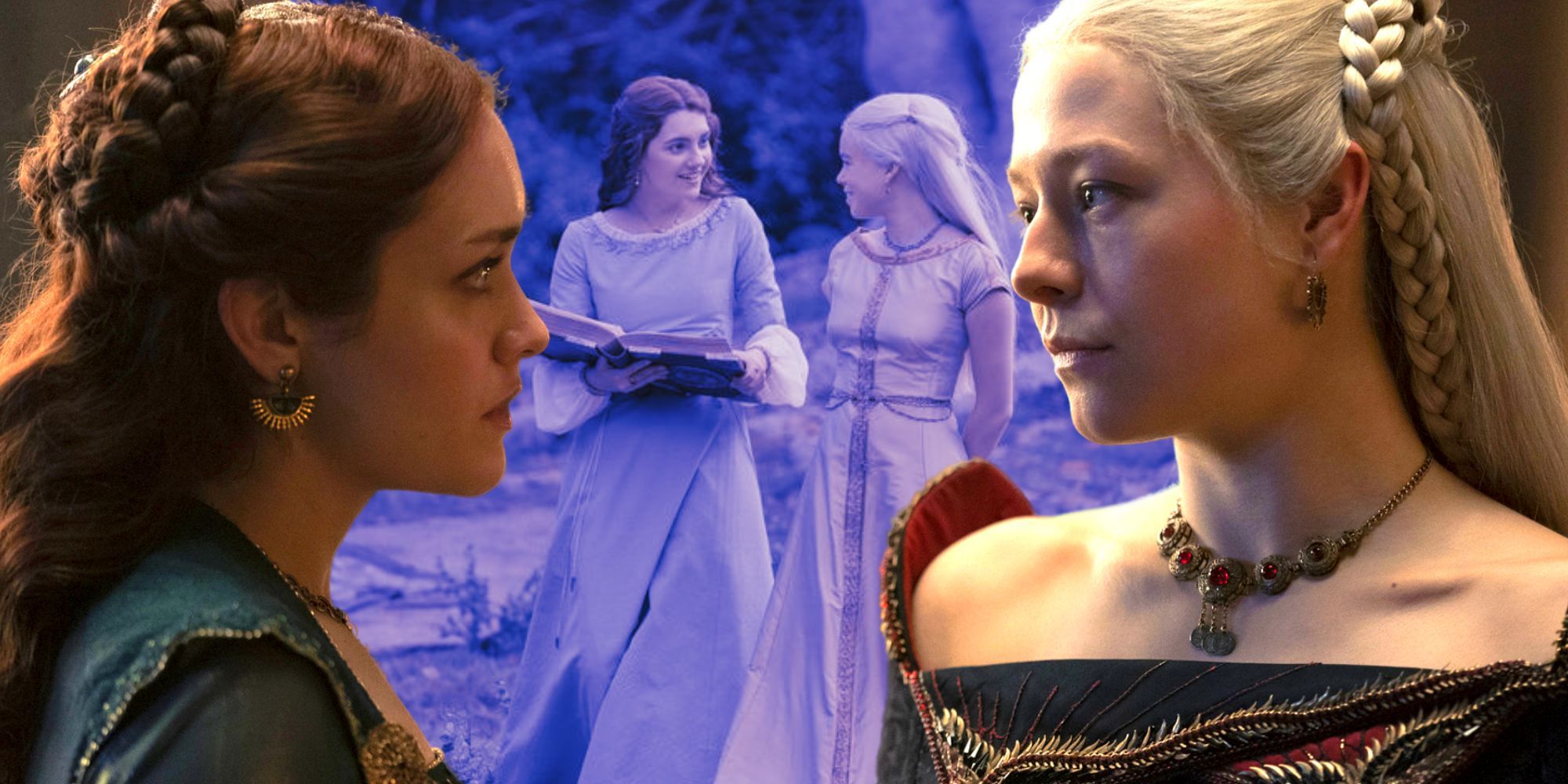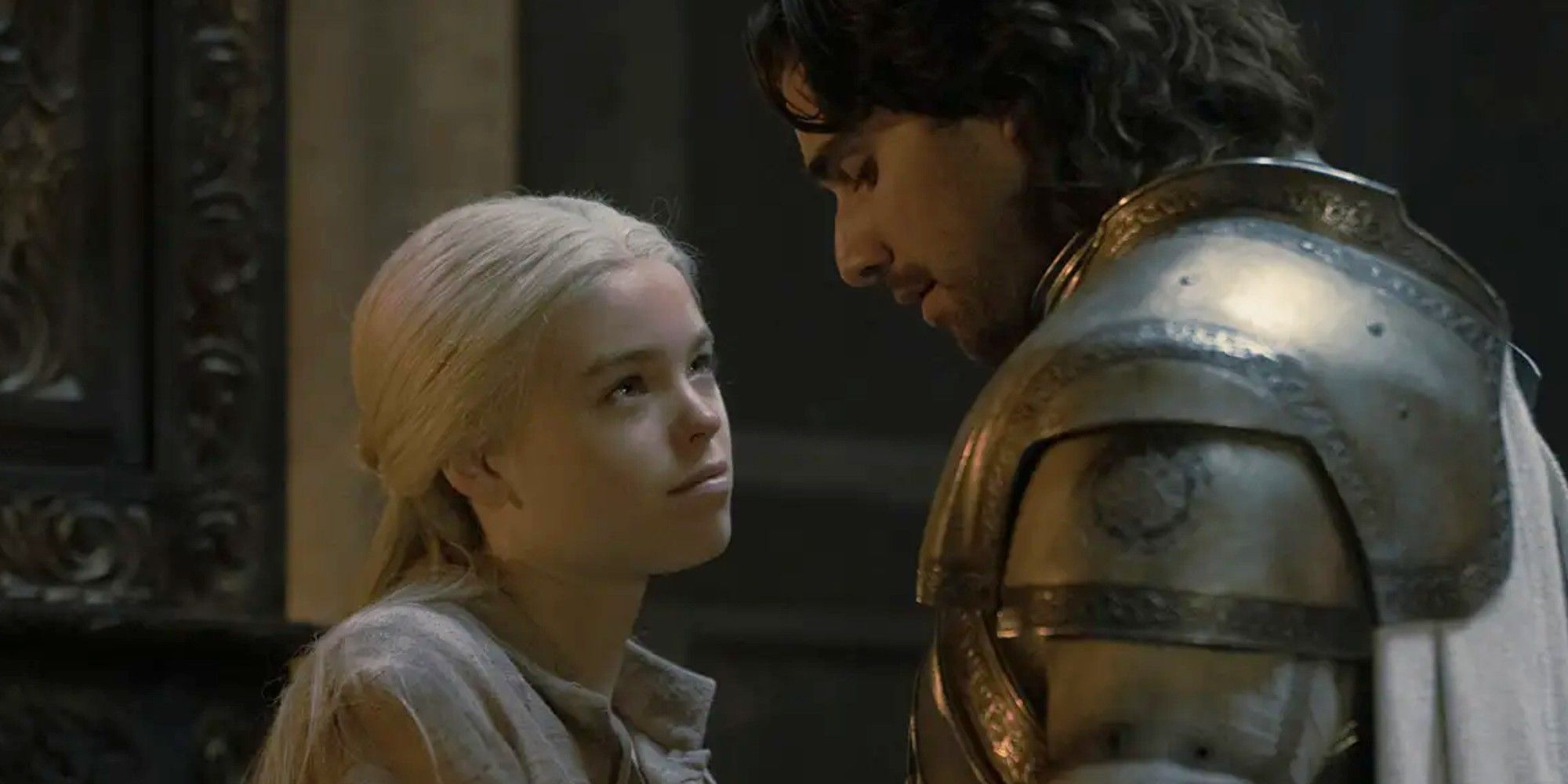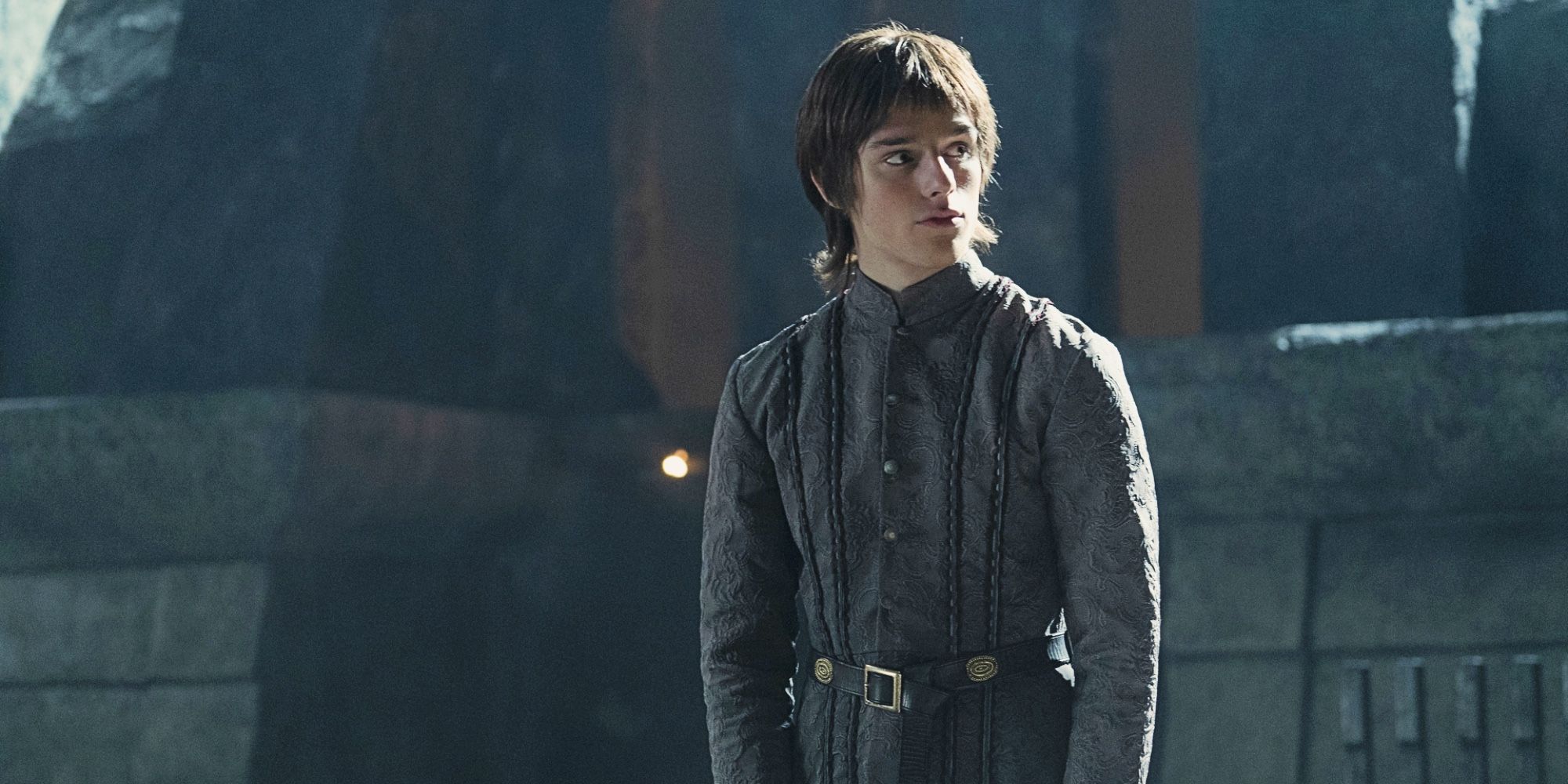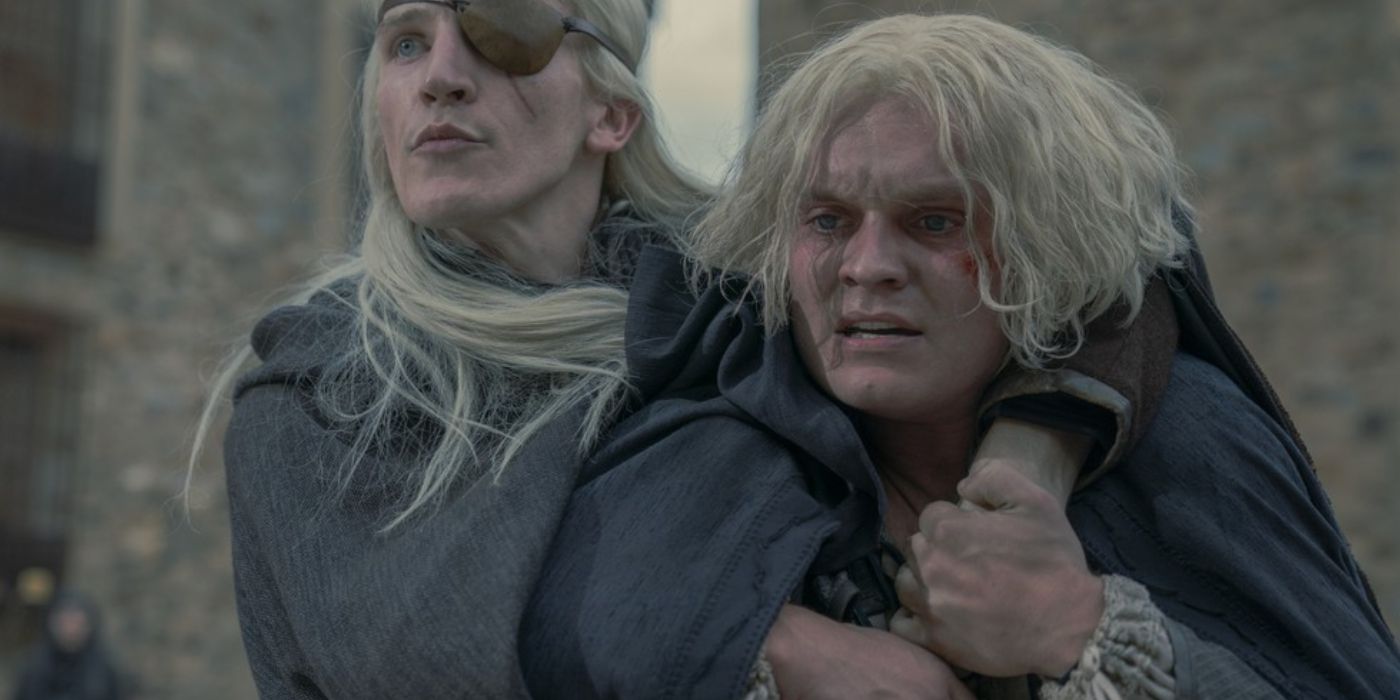Warning: contains SPOILERS for House of the Dragon season 1 and George R. R. Martin's book Fire & Blood.House of the Dragon season 2 is already guaranteed to avoid one of season 1's biggest problems — the copious and often confusing HOTD time jumps. House of the Dragon's time jumps were narratively necessary to illustrate the twists and turns of various schemes and family dynamics, not least the rollercoaster relationship between Rhaenyra and Alicent from childhood friends to the brink of civil war. But they were also alienating for audiences, with it often being a struggle to follow both the constant recasting of characters, how exactly they interact with one another after the span of a few years, and how their motivations and personalities might have changed.
That said, the House of the Dragon time jumps and recasts, while confusing, still didn't disrupt the Game of Thrones sequel that much — as evidenced by HOTD winning the Golden Globe for best television drama, alongside Emma D'Arcy also winning in the best television actress category for their role as Rhaenyra Targaryen after the time jump. In many ways, the confusion caused by the time jumps was a necessary sacrifice in order to do justice to the book on which the series is based, George R.R. Martin's Fire & Blood, a quasi-historical novel that details more than a hundred centuries of House Targaryen's reign. Still, many will no doubt be relieved to know House of the Dragon season 2 has a much more linear timeline planned.
House Of The Dragon Season 1's Time Jumps Made Sense... But Hurt The Story
House of the Dragon's time jumps and earlier episodes served to provide much-needed contextual prologues to both the phenomenal final three episodes of season 1 and the Dance of the Dragons civil war to come in season 2 and beyond. The time jumps were clearly a risk given audiences likely craved the immediate gratification familiar from Game of Thrones' storylines. But ultimately, as House of the Dragon's Golden Globe win shows, it all paid off. The recasting and changed personalities might have been confusing, but major moments in the show would probably not have been as dramatically satisfying without them.
Alicent's desperate demand for "an eye for an eye" after Aemond's fight with Lucerys at Driftmark, as well as her furious confrontation with Rhaenyra, would not have been nearly as powerful without the gradual disintegration of their friendship so patiently explored in the first five episodes. Daemon's grab of Rhaenyra's throat in the finale would hardly be as shocking a reminder of who he really is without the earlier portrayal of him as a cruel, wife-murdering monster. Likewise, Rhaenys' Dragonpit decision not to utter "Dracarys" and incinerate Aegon's retinue wouldn't be nearly as profound if there weren't nine episodes of everyone underestimating "the Queen who never was."
The HotD Time Jumps Were Necessary But Confused Some Viewers
At the same time, however, it would be churlish not to point out that while the time jumps were well-intentioned, necessary to lay the groundwork for Dance of the Dragons, and accentuated the impact of the later episodes' big moments, they were often still frustrating. It was initially difficult to build rapport with House of the Dragon's characters when their actors were changing every few episodes, and the abrupt deviations in their motivations and personalities often rang hollow. For example, Milly Alcock's Rhaenyra was an engaging presence, rebelling against a patriarchal society and refusing to submit to her fate as essentially an heir production factory.
When the House of the Dragon time jump takes viewers to Emma D'Arcy's Rhaenyra in episode 6 with three children in her mid-20s, it partly hammers home that there is ultimately no escape from this world's Feudalist misogyny, which is an important point to convey. However, this doesn't make her character U-turn any less jarring as, for the audience, it emerges from nowhere. Other elements also felt rushed, such as Daemon's complex relationship with Laena before she dies, or the sincere love at the center of Rhaenyra's romance with Harwin Strong. To be fair, given the massive timeline of the book Fire & Blood, even with the House of the Dragon time jumps, it was a tall order for the series to adapt each and every significant plot point in the first place.
House Of The Dragon Season 2 Will Be Better Without Major Time Jumps
Yet, as compelling as House of the Dragon season 1 was, and as well-performed as each iteration of the younger characters were, especially Alcock as Rhaenyra, the show is almost certainly going to find itself on surer footing going into season 2. The first season covered decades of story, while the Dance of the Dragons transpires only over a few years, making House of the Dragon's time jumps and recasting almost entirely unnecessary. This will allow Condal, the filmmakers, and the screenwriters the opportunity to tell a more coherent tale.
In theory, this should allow more time for patient and nuanced character development in future House of the Dragon seasons and various subplots the time and space to breathe. The kind of malnourished story season 1 had, like Daemon and Laena, should be afforded more than a handful of scenes to allow proper investment in its unfolding and understanding of its intricacies. Likewise, the kind of jarring characterization that saw Aemond sharply transition from a frustrated and bullied tween in episode 7 into the competent, arrogant, and revenge-seeking adult Aemond of episode 8, can now be avoided. There is more scope to explore these developments in detail.
Could House Of The Dragon Still Have Timeline Problems In The Future?
While House of the Dragon's time jumps and recasting is ostensibly at an end, different kinds of timeline management woes present themselves for House of the Dragon's remaining three seasons. Indeed, George R.R. Martin's Fire & Blood actually covers around 140 years of the Targaryen dynasty in Westeros — including subplots that connect important individuals and minor houses to House Targaryen's fate. There are plenty of assassinations, schemes, and battles to cover, including the monumental battles at Rook's Rest and Duskendale. Then there's the Sowing of the dragons and the seismic Battle of the Gullet. Perhaps most tantalizing of all is the spectacular dragon fight (and deaths) of Aemond and Daemon above Gods Eye, or the riots at King's Landing and the sacking of the Dragonpit. Next season and beyond, that is a lot of ground to cover.
That is before even considering how deep into the remainder of Fire & Blood's timeline House of the Dragon intends to go. If it continues to follow the Targaryen lineage, there's still the Hour of the Wolf to get to, which involves Lord Cregan Stark's six-day governance of King's Landing. There's also the reign of Aegon III after his installation as king. Both these incidents might receive screen time, but without the series' main characters present at this stage, it is unlikely to be much more than an episode or two even if they are covered by the show.
House of the Dragon is currently planned to run for four seasons. Precise pacing by Condal and the rest will be required to both do the Dance of the Dragons justice as a breathtaking civil war worthy of the highest-budget summer blockbuster movie, while simultaneously peppering the remaining three seasons with enough prestige TV minor character beats and colorful subplots. With so much high drama and intense, brutal action left to cover, it demands a tricky balance to keep it as engaging a story, as well as, hopefully, as exhilarating a spectacle.
Will House of the Dragon season 2 have a time jump? Thankfully, House of the Dragon's showrunner Ryan Condal has offered assurances that the series' significant time jumps have concluded. "As a reward to our wonderful audience for following us through all the time jumps and recasts, they are done," Condal said after the season 1 finale. "We tell the story in real-time from here forward. The actors are playing these characters until the end. We’re not recasting anybody. We’re not making any huge jumps forward in time. We are now in the Dance of the Dragons, and we’re gonna tell that story."
HotD Time Jumps Weren't As Big An Issue As Some Made Out
House of the Dragon's time jumps in season 1, in hindsight, weren't that big of a problem for the show's overall storytelling. Time jumps enabled showrunners to flesh out the extensive House of the Dragon timeline in just a couple episodes, and establish the histories of key players in the Dance of the Dragons. It also helped that House of the Dragon is a spinoff of Game of Thrones, which meant that the prequel had an established audience before it even aired — viewers already familiar with Westeros. In the end, House of the Dragon's two Golden Globe Awards are proof positive that the time jumps really didn't hurt the series' storytelling all that much.

